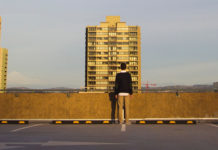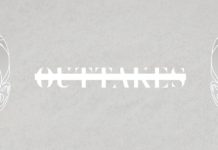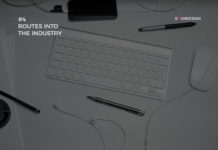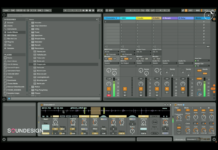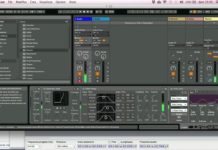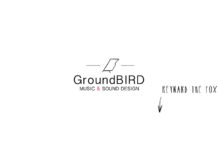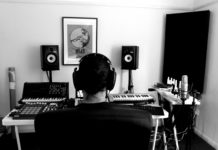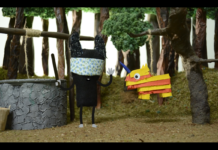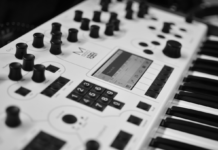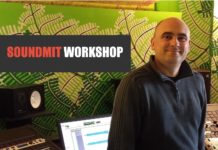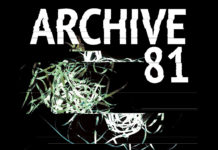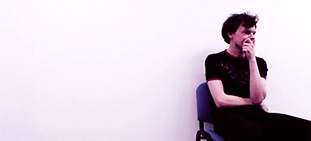Sound design is always hard to explain. But we live in the era of multimedia and something magical can happen, as in the case of Philip Horton, a bold Sound lover from UK, who created a very interesting video for his final project at the university.
Hi Philip, I read from your LinkedIn profile that you’re living and working in UK. Can you tell us more about you and your activities?
Hi Gianpaolo, my main hobby is as a guitar player/singer/songwriter – I’ve been playing and writing since I was about 11 and studied Creative Music and Sound Technology at university.
During my degree I got to learn a lot about sound design, mixing and sound synthesis, which fuelled an interest in creating sound effects for film and TV. I moved to London about a year ago to work in TV.
I still play guitar in my spare time, but if my musical ambitions don’t come true I will pursue sound design as a career!
I was very surprised when I watched your video Hiss Hiss Clang Clang, because it’s a clear introduction to the main features and purposes of sound design for storytelling. Could you describe the work behind it?
I wanted to show sound design in context. A lot of textbooks and articles give examples of sound effects and their potential use, but they tend to focus on the technical elements. Also, the written word can’t truly express the effect of sound – the audience has to hear it. By shifting the focus to how sound design works in real life, the audience can experience sound design doing what it’s meant to do – communicating the story.
People see and hear these techniques all the time, but might not realise it until it’s made obvious (good sound design often goes unnoticed, after all!). Of course, I didn’t want it to be a visual lecture either, so it had to be entertaining and use familiar scenarios.
I had some friends who kindly volunteered their time for camera work and to act as other characters, and I edited the footage together and produced all the sounds. In fact, apart from my voice at the very beginning of the film, there is only one sound used that was recorded live on set – a sound of a chair scraping when I get up!
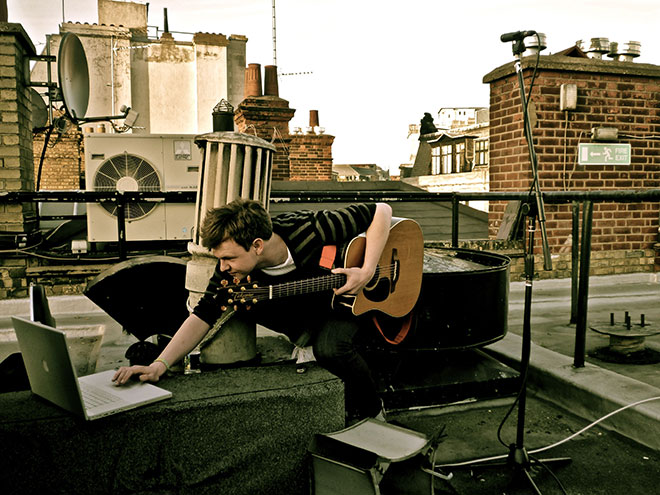
You have a degree in Creative Music and Sound Technology at the Leeds Metropolitan University. What kind of feedback did you receive while presenting this video at the University? How much academic world is interested in this topic?
The video was part of my final year project, so rather than write a dissertation, I produced this film in addition to some musical performance videos. So there wasn’t much of a reaction beyond the official feedback from my tutor! I got a good mark for the project, and a First in my degree overall, which I was very happy with!
My brother teaches Film and Media to 16-18 year-olds and he uses this video in his lessons to illustrate sound design.
Beyond that however I have not had a lot of academic feedback. It is an area that is still developing academically I think, as it is a rather niche industry and often gets included in the wider Film Studies subject.
I have written a couple of essays comparing the use of hyper-real sound in different films, but finding academic sources for research was difficult. A lot of information came from online articles, interviews and even DVD commentaries. I do recommend the book Practical Art of Motion Picture Sound by David Yewdell, however!
Now you are working in the field of broadcast media. Can you tell us more about your job?
During my degree I did a placement at a video production company and learnt a lot about editing and post-production. I work now for a satellite broadcaster producing graphics and branding for their promos – the final touches before it goes on air. It’s a good environment to work as in my department there are a lot of creative people – designers, editors, animators as well as audio dubbing mixers. I have sat in on a promo mixing session to see how it’s done by the professionals.
The main point I took away was to use your time wisely – the guys here get through dozens of promos a day so making decisions quickly is important, as well as being quick with the mixing desk.
I’m hoping to get more into the sound design side of things, either as a freelancer or a junior with a post-production company.
Can you give me 3 names that inspired you in your life (musician, artist, sound designer, etc.)?
Ben Burtt – I first became fascinated with sound design after watching all the making ofs and commentaries on the Star Wars DVDs! He was a great pioneer with sound design and is still one of the most revered names in the industry. Star Wars in one of the only films where the sound effects are as memorable as anything else in the film – the lightsaber buzz, Darth Vader’s breathing, Chewbacca’s growls, etc.
Edgar Wright – Films such as Hot Fuzz and Scott Pilgrim vs The World were a big influence on Hiss Hiss Clang Clang – Wright really respects sound design as a medium in its own right and uses it brilliantly in his films. For example, he often uses ambient sound to punctuate the drama of his scenes and highlight the thought processes of the characters.
Elbow – One of my favourite bands. I love Guy Garvey’s lyrics and Craig Potter’s production. They record in Blueprint Studios in Manchester which has a really unique sound and gives the music a lot of character. Interestingly, they do a lot of their mixing in-the-box and experiment with microphone placement rather than lots of outboard gear. They are also great live, I recommend trying to catch them if when they tour next!
- These two women will save the future of Sound Art with a web radio called Radio Papesse - June 20, 2016
- #SayItWithSound Contest: Sonify your World and Win - December 21, 2015
- Sound Technician at University of Greenwich - December 1, 2015




